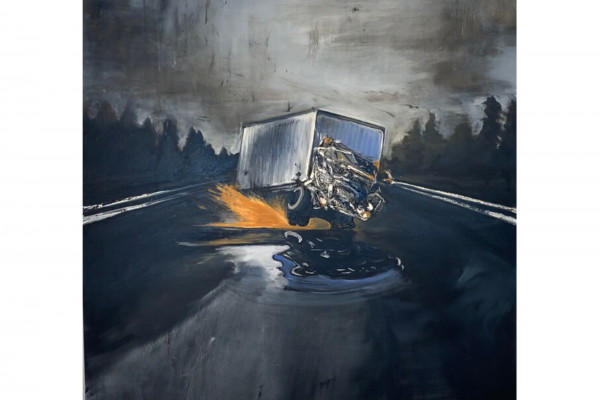By Kelsey Adams
As Ontario slowly and cautiously opens back up again following the first wave of the COVID-19 pandemic, the art world is left in limbo.
Galleries have been closed since mid-March, funders are scrambling to get financial assistance to artists across the province, and plans for many major art events are up in the air.
Not considered an essential service, and faced with massive economic disruption, the art industry, and by relation, artists have acclimated to a “new normal.”
This “new normal” involves online virtual gallery tours, working from home, instead of in shared studio spaces, and no exhibition openings. Essentially, the tangible sense of community that binds artists together is on hiatus for the time being.
That doesn’t mean that artists and patrons of the arts have stopped supporting each other, just that the methods are now predominantly online. The ubiquity of Instagram as a means for artists to share their work is not new, but a recent rise in online print sales and community initiatives like Canadian Art in Isolation (that connects artists with seniors living in long-term care facilities) are its new iteration.
Still, the day-to-day practices of many artists look very different than they did pre-COVID.
For Toronto artist Destiny Grimm that has meant moving away from her typical large-scale oil paintings to tiny, colourful figurative sculptures. “Because I’m confined to being home I’m just choosing activities that are better suited to that space, so I’ve been making pottery. With oil painting, it’s messy and with the way my process works, I need a lot of space and it takes a long time to dry.”
In her first month of quarantine she made around 50 small sculptures. Some were previous drawings of characters that she brought into three dimensions, some were abstract shapes and forms, some were figures bending over backwards. “The building of the objects feels like using a different compartment of my brain [compared to painting].”
Miscellaneous sculptures and figures bending over backwards by Destiny Grimm. (Made during quarantine.)
Until she can get back to the studio, Destiny now finds herself working out of her mother’s home, and satisfying her urge to paint by underglazing her greenware (ceramics that haven’t been fired in a kiln).
London artist Michael Graham Thompson, also an oil painter, found himself creating delicate drawings instead of paintings on wood panel, when his studio moved to his parent’s dining room table. He had a private studio space, but as measures to prevent the spread of the virus were intensified, his visits to the studio felt less necessary. He brought supplies home and “ended up making things that were more conducive to the residential studio, like working with watercolour and pencil crayon.”
One of Michael Graham Thompson’s delicate pencils drawings made during quarantine along with Calm, oil on Canvas, 2020. (Made pre-Covid.) and Nighthawks, watercolour on paper, 2020. (Made pre-Covid.)
He unfortunately lost his studio space because the strain of COVID was too much on his landlord’s business. Like many emerging artists, Thompson worked a part-time job in the restaurant industry and the Canadian Emergency Relief Benefit is helping subsidize his lost income. But, he’ll have to find a new studio when the dust settles.
One benefit of this period of isolation is that it brings remote art communities closer together. “Obviously, before all of this, social media could connect people from wherever. But, I think now people have taken to looking at the art world as a whole; and appreciating people, regardless of what school they went to, where they live, who they know.”
Hamilton artist Gabriel Baribeau echoes a similar sentiment, saying, “Our friend down the road or our friend in the studio is just as close now as our friend in New York City.”
Baribeau started a new series of paintings reflective of living through a pandemic. It’s different from what he normally creates but he felt compelled to document this moment.
Baribeau made the switch from working in studio to working out of his home before the pandemic hit. His practice has always involved building cooperative artist studios and art collectives, and the last studio that he founded with friends folded in January.
“I just always work with lots of other artists around and within an embodied community of people. That’s obviously gone. I can’t take for granted anymore that the physicality of my art will be experienced, or my art in general will be experienced.”
Gabriel Baribeau in his studio, pre-Covid, along with two of his works Enter Dungeon Crawl, oil on canvas, 2020. (pre-Covid) and Stopped Suddenly, oil on canvas, 2019
He was working on a collection of oil paintings for three years that he only shared with his immediate community. He was anticipating a solo show opening the week lockdown kicked into high gear, and now none of the works have been viewed publicly. “The opening that I was waiting three years for just got kiboshed and it was brutal.”
Luckily, his community hasn’t dissipated, it will just have to be interconnected virtually for the time being.









